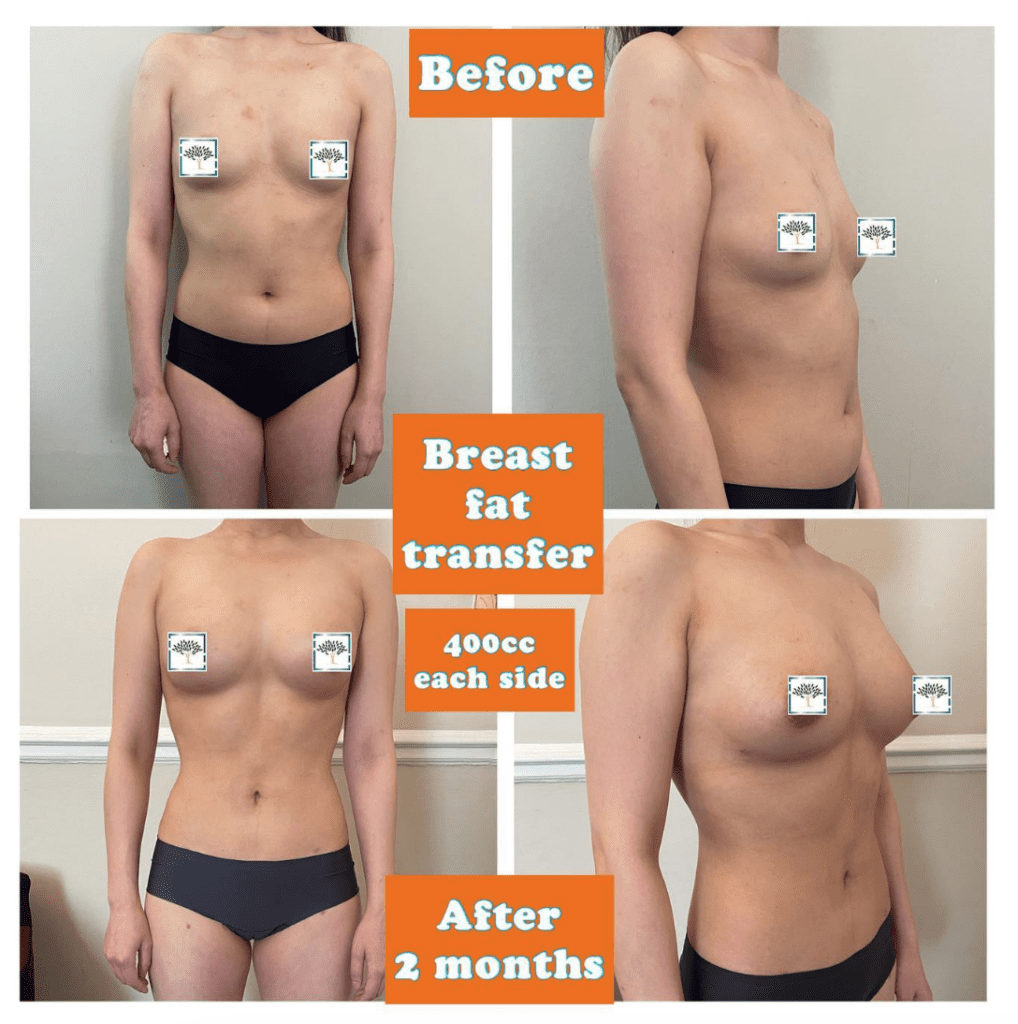Fat transfer is a popular cosmetic procedure where you remove fat from one part of the body and inject it into another. Also known as fat grafting, you can use fat transfer techniques in several body areas. When considering body fat transfer surgery, patients often want to know how much fat survives. Here’s what you need to know.
What Is Fat Transfer Surgery?
Fat transfer surgery is a cosmetic procedure involving harvesting fat from one body area and transferring it to another. For instance, you might consider fat transfer to add volume to your face over methods like fillers and implants.
The advantage of fat transfer is that it uses fat from your own body, thus one of the most natural cosmetic procedures. The doctor takes fat from one part of the body through liposuction, processes and injects it into the treatment area. So, fat transfer can also be a body sculpting procedure when you have excess weight around the belly or hip region that won’t go away with exercise and diet.
Plastic surgeons can use fat transfer in cosmetic surgery in many exciting ways. Some common procedures that involve fat transfer include:
- Brazilian butt lift – the procedure aims to shape and increase the size of the buttocks without using implants. Fat is transferred from areas like the belly and injected into the buttocks to create a shapelier and more voluminous read end.
- Breast augmentation – while implants are mainly used to increase the size of the breasts, some women prefer fat transfer. The good thing about breast fat transfer surgery is that the results are more permanent, and you never have to worry about an implant leaking or changing the implants every 10 to 15 years.
- Facial fat transfer – ageing can lead to lost volume in the cheeks, fine lines and wrinkles. Fat transfer can help counter these effects rather than using other non-surgical anti-ageing treatments like fillers.

What Results Can You Expect After Fat Transfer Procedure?
While fat transfer has the potential to produce excellent results, you need to have realistic expectations and understand that fat transfer isn’t capable of helping you achieve a dramatic transformation like other methods.
For instance, women who want to increase their breast size significantly will benefit more from breast implants than fat transfer. Why? There are limitations as to how much fat can be extracted and how much is transferred.
The reality is that some transferred fat cells will not survive, which your plastic surgeon will talk to you about to help manage your expectations. To maximise how much fat survives after the procedure, you need to follow your doctor’s post-op instructions.
There will be some swelling following the procedure at the site where fat was injected. Once this subsides, you will start seeing the results. However, the final results will not be visible for several months. In most cases, it takes about 6 months for the newly transferred fat to settle, establish a blood supply, and take permanent hold.
How Much Fat Survives After Fat Transfer?
You first need to know that fat transfer results are permanent, but not all fat cells will survive. This is entirely normal. Your plastic surgeon should have the experience and skills to ensure enough fat cells survive the transfer process. Both the harvesting and injecting stages of fat transfer are crucial, so it’s vital that you choose a surgeon who is an expert in this procedure.
About 50-70% of fat will generally survive after the surgery. The fat that does survive will act like normal fat as it’s permanent but will also grow with weight gain. The results of your surgery are not immune to things like weight gain or ageing. Several factors influence how much fat survives, including:
- Your surgeon’s skill
- The technique used in the surgery
- The way your body reacts to the fat
- Smoking can impact results
You can use fat grafting techniques to achieve different results, from facial fat transfer to breast fat transfer. In this video, Dr Riaz Agha delves further into how much you retain after breast fat transfer.
How to Maximise Fat Transfer Results
Although your surgeon’s skill and technique play a significant role in your results, there are things you can do during your fat transfer recovery to maximise your results. While it’s normal to lose a certain percentage of fat after the surgery over the following months, it’s a good idea to stick to some healthy habits for optimal results like:
- Quit smoking – for your newly injected fat to survive, it must reconnect to the blood supply. Smoking can limit blood flow, thus reducing the amount of fat that settles and establishes a blood supply.
- Avoid sleeping on the area – whether it’s a Brazilian butt lift or breast fat transfer, avoid sleeping on the treated area while you recover. Putting pressure on the treated area will reduce the amount of fat that survives.
- Follow a healthy diet – adopting a healthy diet and exercise regime will help you maintain your results and optimise your body while healing. Consider foods with enough calories and healthy fats like salmon, avocados, olive oil and nuts. A healthy diet will help provide the body with enough nutrients to feed the transferred fat.
- Wear loose clothes – although you should be wearing your compression garment if necessary, avoid wearing tight clothes during your recovery time.
- Avoid strenuous activities – when recovering from a fat transfer procedure, avoid strenuous activities as these can interfere with the fat’s survival. However, your doctor will recommend light to moderate exercise to help stimulate blow flow to the surgical site. When it comes to workouts, avoid any activities that might result in compression on the treated area or falls.

Fat Transfer Surgery UK: Where to Get the Procedure
Fat transfer results are permanent, but a healthy lifestyle is critical to maintaining excellent long-term results. While losing some fat after the procedure is expected, an experienced surgeon uses techniques to maximise fat survival and results.
It’s essential that you choose a qualified plastic surgeon to perform the procedure. Because of that, it might help to first go through fat transfer surgery before after photos on their website before deciding on the procedure.
Depending on your goals, fat transfer can be an effective way to achieve great results without using any foreign materials in the body. It’s a more natural way to enhance the contours of the body.
Book a consultation today at The Harley Clinic, London, to start your fat transfer journey.













